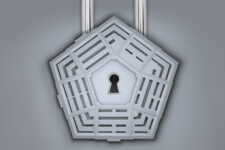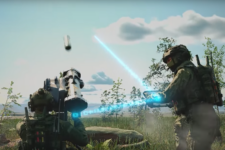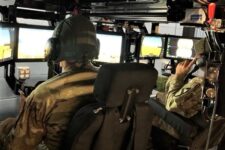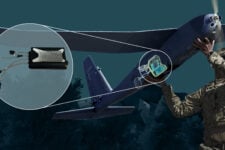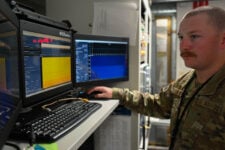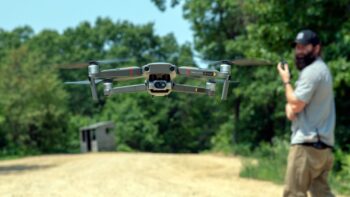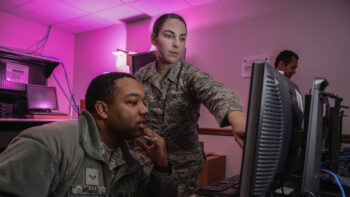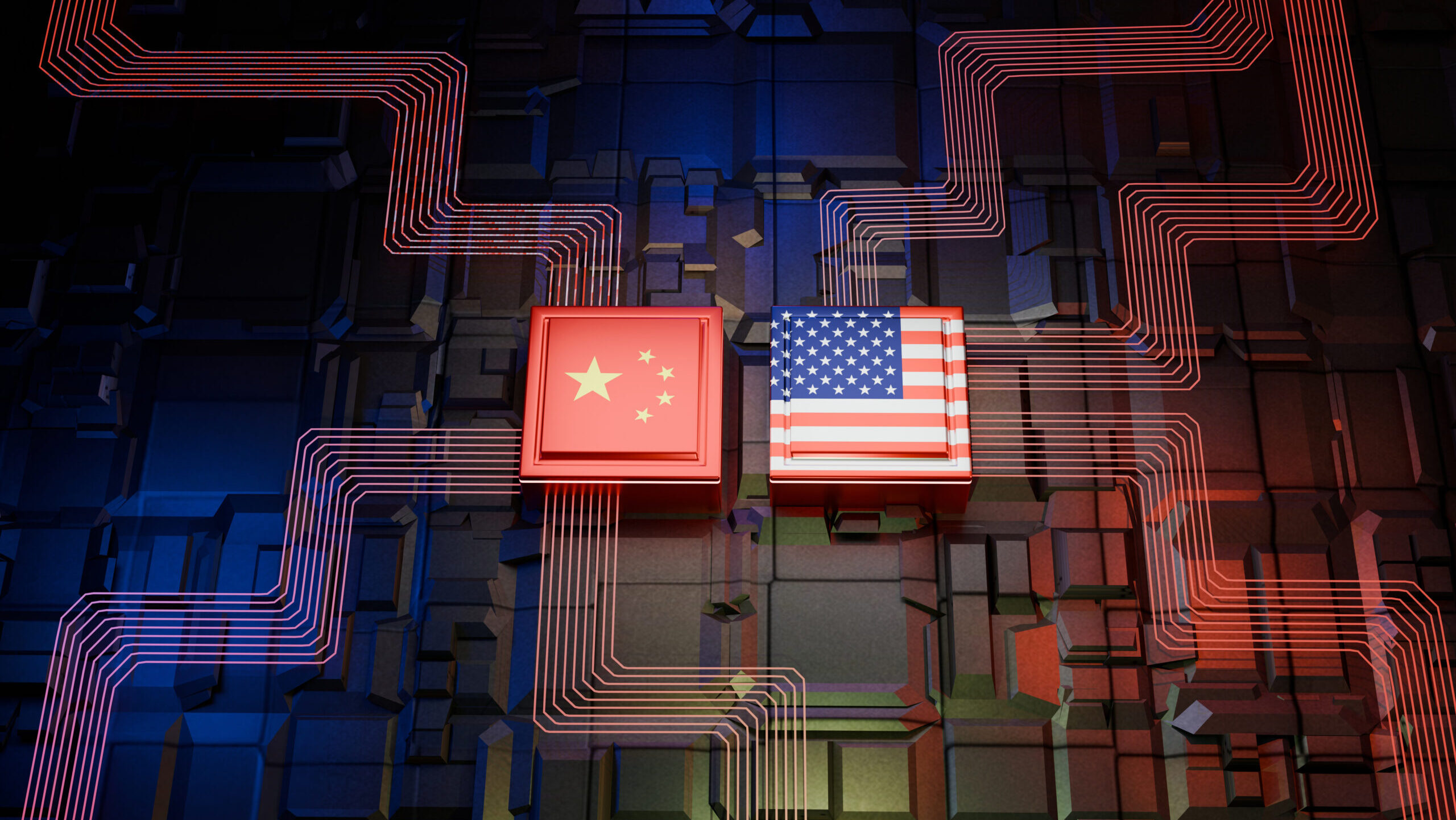
The US and China are in a technology arms race. But which side has the best path forward? (Wong Yu Liang/Getty Images)
WASHINGTON — With Beijing investing heavily in artificial intelligence and the high-tech tools of what it calls “informationized” warfare, a worried Washington wants to catch a wave of innovation in AI, software, and other cutting-edge technologies. But the governments of the rival superpowers have very different relationships with their respective tech sectors. So how can the US ensure it has the edge?
“China’s building more ships…building more planes, [but] the US dominates tech innovation,” said Gen. James Rainey, chief of Army Futures Command, at the recent Ash Carter Exchange. “The best companies in the world are wholly American, and as long as they come with us on this journey I feel pretty good.”
But how can East Coast bureaucrats bring West Coast startups along? There’s a long history of high-level anxiety about China’s official policy of “civil-military fusion,” which effectively puts Chinese tech firms at the service of the state, and its state-directed investments in AI. In response, pundits, retired officers, and sometimes even service chiefs have called for a government-led effort like that to build the atomic bomb.
“it’s come up a couple times today, the idea of a Manhattan Project,” said retired Air Force colonel and Second Front Systems CTO Enrique Oti, moderating a panel of tech experts at Second Front’s Offset Symposium conference. “What is the hard problem that is not solved now that you think we need a Manhattan Project for… to maintain our competitive advantage, primarily against, I’ll say, China?”
“I don’t think another Manhattan Project is really what the country needs,” answered Katie Sutton, chief technology advisor at US Cyber Command. “[That] was a single, very focused technology that was needed on a certain timeline… Going forward, I think our challenge, where we’re going to struggle, especially on the national security side, is the number of new technologies that are coming at us.”
Just ask Maynard Holliday, who helped found the Pentagon’s outreach office in Silicon Valley, the Defense Innovation Unit, and now oversees 11 officially designated “critical technology areas” from AI to 5G for the Pentagon’s Research & Engineering branch. He spends a lot of his time and energy just touching base with all the promising innovators out there, he said last week at the DefenseTalks 2024 conference.
“Part of my job — to be honest, like my favorite part of the job — is to go out and identify new technologies…being developed by non-traditional industry players,” he said.
“I spent the last two weeks in April back at home in the Bay Area and on the West Coast,” Holliday said. He visited a range of companies, including Hadrian Automation in Torrance, which uses AI to run precision manufacturing machines; Divergent, also in Torrance, a manufacturer that is branching out from the automotive industry to unmanned systems; and Relativity Space in Long Beach, which launched the world’s first 3D-printed rocket.
The sheer volume of innovation can be overwhelming — but it’s something the American free market is actually well-suited to sort out, argued Nand Mulchandani, the first-ever Chief Technology Officer at the CIA and former CTO of the Pentagon’s Joint AI Center.
“In this country, there’s a very specific set of conditions and math that makes the system work,” Mulchandani told the Ash Carter conference. “For every Facebook…. there were 399 other companies that didn’t make it.”
“Something like eight of ten startups fail,” echoed Corey Jaskolski of RAIC Labs. While a lot of defense reformers blame ponderous Pentagon procurement processes for making life hard for startups, he told the Offset Symposium, “a lot of the corpses in the valley of death were going to be there anyway.”
From this perspective, the high failure rate works a lot like natural selection, the engine of evolution, which mercilessly winnows animals until a handful of “the fittest” survive long enough to breed. Another analogy is the classic thought experiment of letting myriads of monkeys bang on keyboards until one of them randomly generates, for example, the script of Hamlet.
“I call this the ‘million monkeys at a typewriter,’” Mulchandani said. “You can’t pick the specific monkey that is going to crank out Shakespeare. You know one of them will, probabilistically.”
American Initiative Vs Beijing Bureaucracy
The unpredictable nature of innovation is why “the state-sponsored model of economies, where the winners get chosen by bureaucrats to be winners or losers, doesn’t work,” Mulchandani argued. Authoritarian regimes like China can mobilize huge resources to make big bets on proven technology and be a “fast follower,” he said, but they have much more trouble leading the way.
But is this actually how China operates? Do Beijing bureaucrats typically try to pick the winners in advance?
“Yes and no,’” said Dean Cheng, senior advisor to the China program at the US Institute of Peace. “This is not a straightforward command economy.”
“The Chinese recognize that the market is the best system for various signals — demand signals, resource allocation,” Cheng wrote in an email exchange with Breaking Defense. “This is distorted by politics — e.g., keeping steel mills and cement plants open because they employ a lot of people — but it’s not quite a bunch of wise men [in the] Politburo picking tech to support.”
RELATED: Empowered edge versus the centralization trap: Who will wield AI better, the US or China?
In fact, software and AI used to be one of the more independent, market-driven sectors of the entire Chinese economy, argued Carnegie Endowment fellow Matthew Sheehan. Tech’s early growth, he said, was “super chaotic, super competitive,” and largely outside of government control — so much so that Chinese leader Xi Jinping tried to crack down in recent years.
“You had this explosion in Chinese startups…pioneering a bunch of weird business models, [like] a million monkeys typing,” Sheehan told Breaking Defense. “China did not get to where it is today by picking winners in technology. It [the government] did not pick Tencent, Alibaba, and Baidu; in fact it had a pretty fraught relationship with these companies over time.”
There was significant government investment, especially in AI after Beijing’s 2017 proclamation that “by 2030, China should be the world’s primary leader in AI.” But it didn’t translate into government control or even a well-coordinated plan. Instead, Sheehan said, “that sent a signal from the central government to all the officials all throughout the country: ‘You need to do something, anything to promote AI.’”
From 2020 to 2022, however, Xi led a major crackdown on what he considered an overly independent tech sector. The chilling effect on investors has continued, Sheehan said, and American attempts to “decouple” economically from China have only cooled things further.
In particular, Sheehan said, “US export controls on chips and chipmaking equipment have really backed them into a corner… They’re really short on chips.” That has forced the Chinese government to make tough choices about which companies to back, both in semiconductor manufacturing and in “frontier” AI development.
That’s true, agreed Cheng, but one still shouldn’t underestimate Beijing, especially when it comes to military technology. “In the PRC, national security considerations will almost always trump all other considerations,” he said. “So, if there’s only so much silicon, so many chips, so much spectrum, national security will get priority.”

